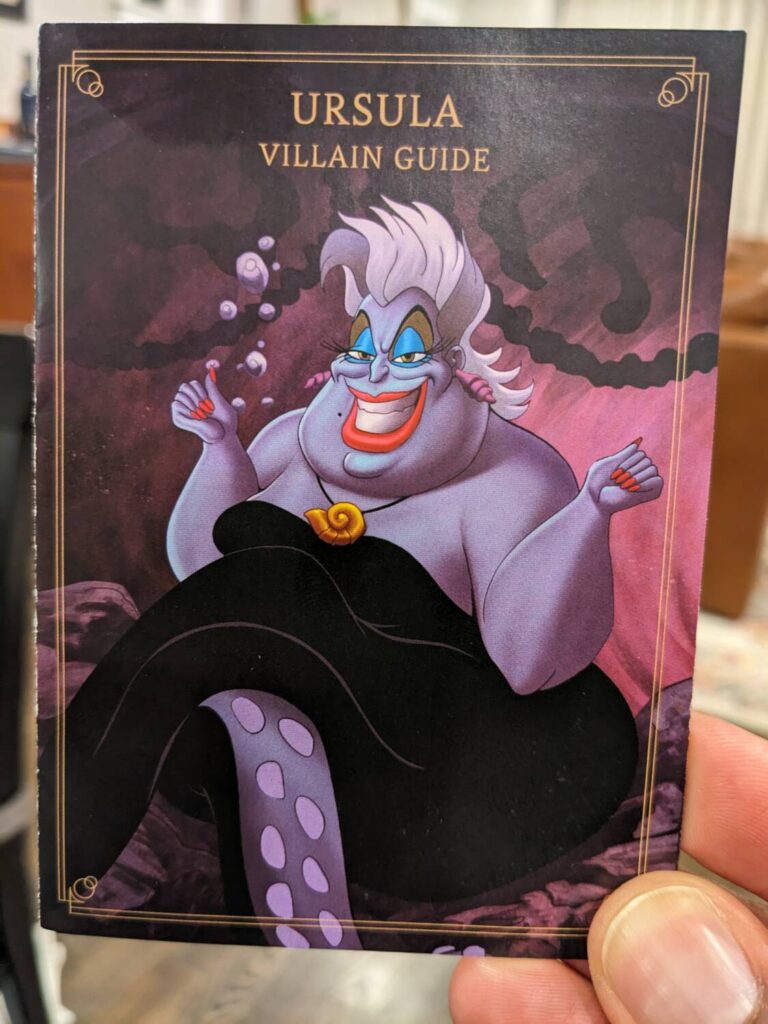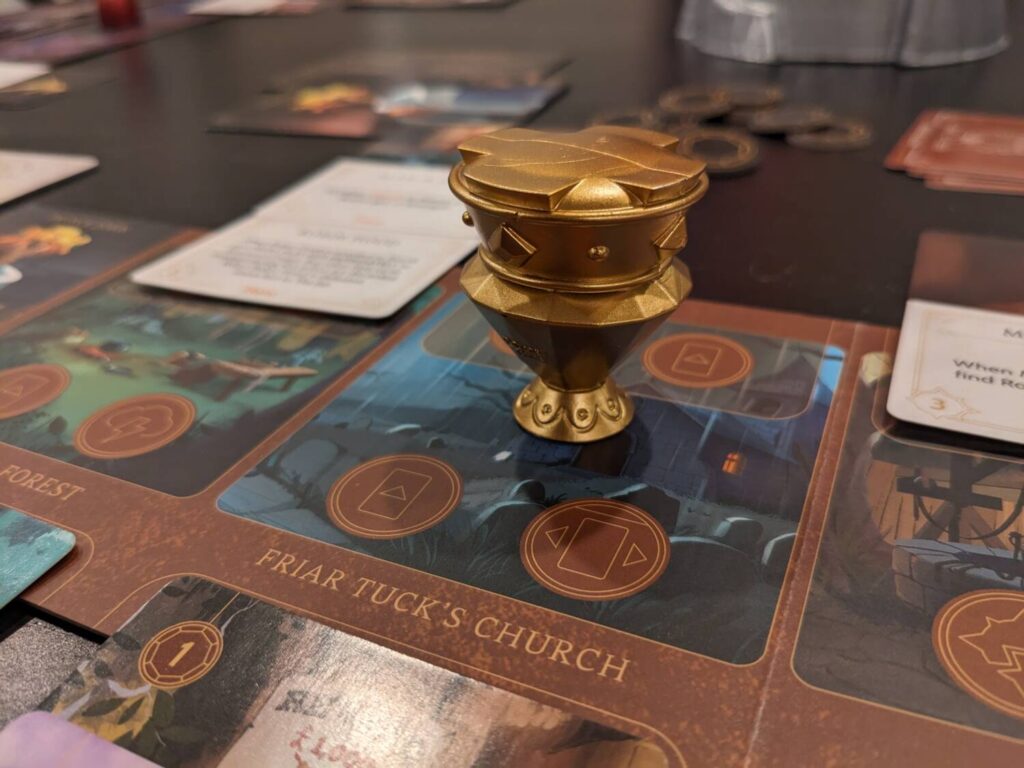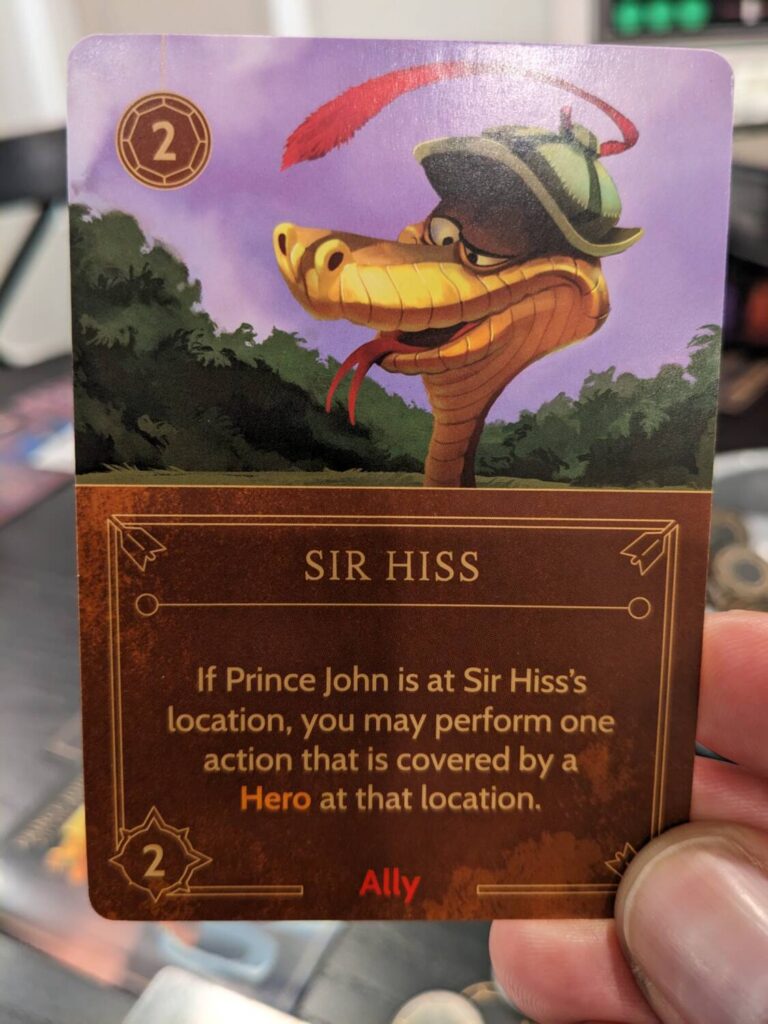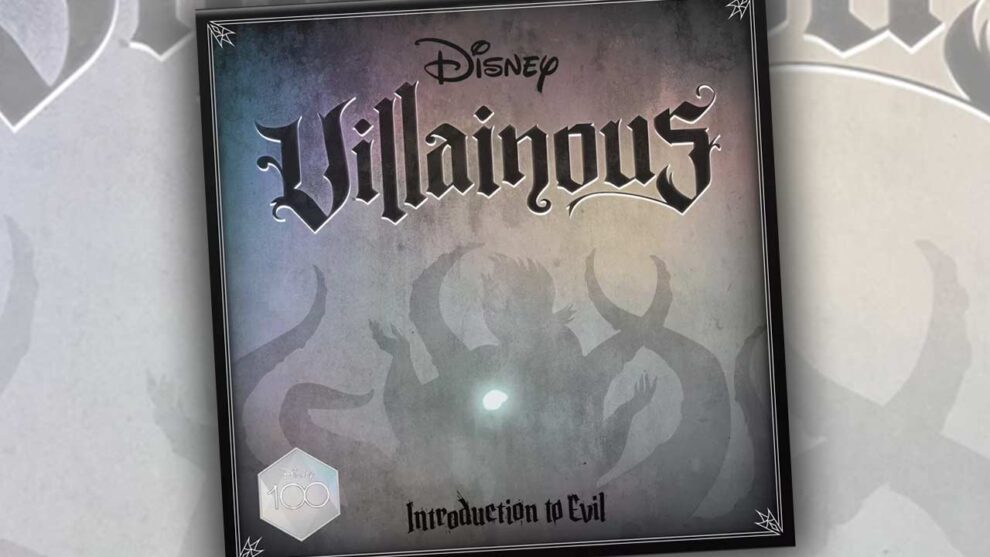Disclosure: Meeple Mountain received a free copy of this product in exchange for an honest, unbiased review. This review is not intended to be an endorsement.
“Wait, you have NOT played Disney Villainous?”
A surprising number of interactions over the last few years at a game night here or an event at a gaming cafe there have ended with this statement, as if I’ve been living in a board game cave for the last five years. (A cave without Disney Villainous, apparently.)
And, I get it…Disney Villainous (2018, Ravensburger) is popular for a reason. The concept is brilliant—players take on the roles of the evil characters from a number of Disney’s classic films, taking actions to complete a unique win condition while other players get the chance to play “Fate” cards from an opponent’s personal Fate deck, messing with their plans. The best part: each villain’s Fate deck is made up of heroes and items from that villain’s movie, such as Robin Hood for the Prince John Fate deck.
The game is considered a classic, and it’s doing well enough in sales to have spawned a boatload of expansions. But the original isn’t perfect—the main issue I always heard from other players is that it’s a game that takes a little too long to play.
Ravensburger has tweaked some of the original format for a new title, Disney Villainous: Introduction to Evil. It’s only available at Target, and like other Target exclusives such as CATAN: Dawn of Humankind, Introduction to Evil refreshes the original Villainous with a simplified approach, four villains instead of six, and an easier way to launch at the start of the game, with players getting two power tokens (instead of zero) to begin the game. Power is used to buy cards from hand to play into that player’s Realm, or play area.
My buddy Andrew Lynch reviewed the Disney Villainous base game a couple years ago, so if you have questions about the base game rules, check out our earlier piece. See below for my thoughts on the new game.

Suck It, Jafar!!
The biggest change from the original Villainous comes down to ease of entry. I connected with the Ravensburger team and a big part of why Introduction to Evil exists is to create mass appeal for players who might be new not only to Villainous, but new to the tabletop gaming hobby.
This part resonates with me. It’s a sample size of only one family, but I reached out to friends in Colorado who own the base game. (I remember it sitting on the bottom of their gaming shelf when we stayed with them over spring break.) They said that they only played the game twice, years ago, then never touched it again. “It’s super complicated to learn,” said my friend, who tried the game with her husband and two children when the kids were both under the age of 10. “We had a hard time learning the strategy.”
That lines up—I think Villainous (the original game) looks like a gamer’s game, but with a Disney tie-in. Introduction to Evil will definitely expand the pool a bit.
One other change: the choice of roles. Prince John, Maleficent, Ursula and Captain Hook are still included in both the original game and Introduction to Evil, but unfortunately (or maybe fortunately, depending on your point of view) the Queen of Hearts and Jafar are not included in this edition.

I can’t speak to why that is, but given the weight of this game, it wouldn’t shock me if Jafar and the Queen are the “hardest” roles to take on. No matter what, if you were hoping to play the new version of the game with one of those two villains, please look elsewhere, or find a copy of the original game!
I played Introduction to Evil a few times with my nine-year-old daughter and seven-year-old son, so let’s start there. They loved playing this game. They loved messing with each other by constantly taking Fate actions, they liked hoarding Power tokens to buy new cards. We all loved how easy the Villainous system is to teach, although my son struggled reading some of the cards because he is seven and that happens from time to time. (Daddy was more than willing to oblige when he had questions.)
Understanding how to win took some time, particularly when anyone took on Maleficent (although a close second came with Ursula’s win condition). I don’t think this is a major issue, but my “Spidey Sense” was tingling when I read the Villain Guide for Maleficent. So we are saying I have to have eight total cards spread across four different locations in my Realm? And I can only play Curses on top of Ally cards? After our second game, we took Maleficent out and stopped using that character in our three-player games.
The production here for a $20 game at Target is really special. I love those mover pieces. (I can’t tell you how much I love the Prince John piece. The way it stands on what look like tippy-toes while reminding everyone that he’s the king, it’s so good!!) The insert and the bowl that holds power tokens are both great, although it feels like Ravensburger just kept the original inlay because there is room for six decks here, even though only four decks are in the box. The player aid is excellent, and the rules overview was great too…nothing beats a five-and-a-half-minute teach.
I really don’t have any issues with anything about this game. Well, maybe one thing: the play time.

An Hour Is Too Long
Introduction to Evil is a good time at the family game table, but I gotta say—20 minutes per player is too long. It’s WAY too long when we are talking about playing with two kids under the age of 10. (I can’t even imagine a six-player game, which the original game offered…that’s probably a two-hour game!!)
The great thing about Disney Villainous is that one can tell when a player is getting close to victory. With Prince John, that player wins when the Prince has 20 Power tokens and Robin Hood is in The Jail region of that Realm. In one of our games, a player had Robin Hood in The Jail but only had 15 Power. We called it. In another game, Captain Hook was in the driver’s seat for an easy victory. We called that one, too.
In both games, we had already been playing for an hour. The kids were getting a little too shifty, and in many cases, a well-played Fate card just delays the inevitable. For those desperate to win a game, that’s an important option. For someone who is just counting down towards a victory lap, that doesn’t feel as meaningful or fun. I found in one game that I kept bouncing between locations that had a Fate action so that I could play something that would mess up one of the kids.
The duration of play is enough to knock this down a point. Otherwise, Disney Villainous: Introduction to Evil is a great time and highly recommended, particularly as a two-player game with a younger player and/or a Disney fanatic. Besides, it’s going to be easier to buy this than a deck of Disney Lorcana playing cards, right?












Add Comment